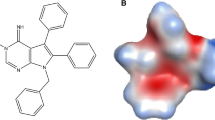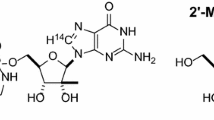Abstract
Irinotecan (CPT-11) is a new camptothecine derivative presently in development for the treatment of several advanced malignancies. It is converted in vivo to a highly potent metabolite, SN-38, by carboxylesterases. All camptothecine derivatives undergo lactonolysis in a pH-dependent reversible manner, generating inactive carboxylate forms. We have investigated in vitro the kinetics of transformation of CPT-11 to SN-38 by human liver microsomes originating from several donors. Microsomes from seven livers were studied individually or as a pooled preparation. CPT-11, either in its lactone or its carboxylate form, was added at a range of concentrations. The SN-38 formed was measured by HPLC with fluorometric detection. In the deacylation-limited carboxylesterase reaction, the linear steady-state kinetics between 10 and 60min were determined. At all concentrations of CPT-11, the steady-state velocity of SN-38 formation as well as the intercept concentrations of SN-38 were about 2-fold higher when the substrate was under the lactone form than under the carboxylate form. We estimated the values (±SD) of K’m and V max to be 23.3±5.3μM and 1.43±0.15pmol/min/mg for the lactone and 48.9±5.5μM and 1.09±0.06pmol/min/mg for the carboxylate form of CPT-11, respectively. We conclude that the greater rate of conversion of CPT-11 lactone may contribute to the plasma predominance of SN-38 lactone observed in vivo. The inter-individual variation of SN-38 formation was relatively high (ratio of 4 between extreme values) but no large age- or gender-related differences were seen. The effect of twelve drugs of different therapeutic classes (antibiotics, antiemetics, antineoplastics, antidiarrhoeics, analgesics), which could be administered in association with irinotecan in the clinical setting, was evaluated in this system (drug concentration: 100μM; CPT-11 lactone concentration: 10μM). Loperamide and ciprofloxacine where the only drugs exerting a weak inhibition of CPT-11 conversion to SN-38.
Similar content being viewed by others
Author information
Authors and Affiliations
Additional information
Received: 30 December 1996 /Accepted: 30 April 1997
Rights and permissions
About this article
Cite this article
Haaz, MC., Rivory, L., Riché, C. et al. The transformation of irinotecan (CPT-11) to its active metabolite SN-38 by human liver microsomes Differential hydrolysis for the lactone and carboxylate forms. Naunyn-Schmiedeberg's Arch Pharmacol 356, 257–262 (1997). https://doi.org/10.1007/PL00005049
Issue Date:
DOI: https://doi.org/10.1007/PL00005049




